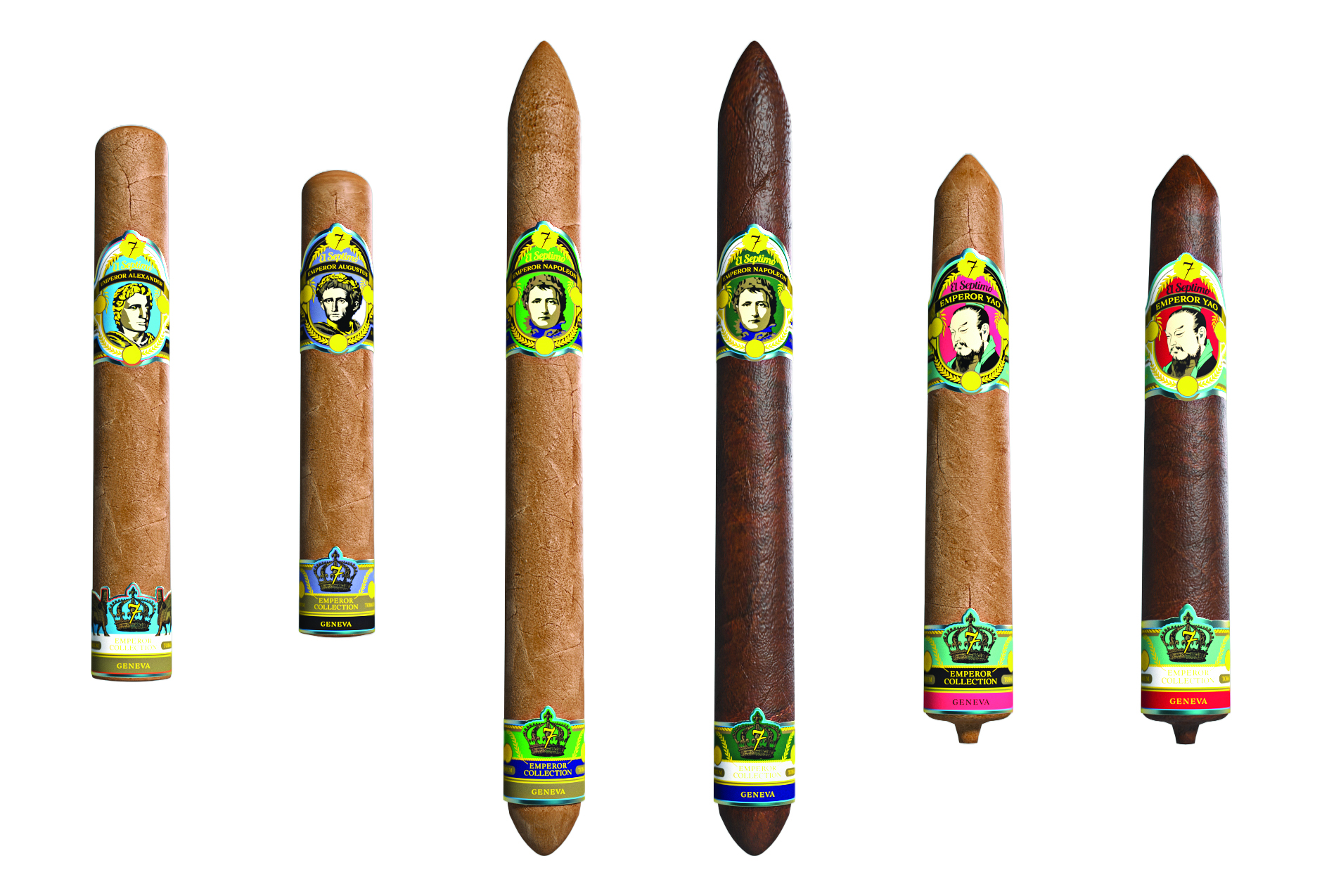In October 2022, El Septimo shipped one of its most ambitious creations to date: The Emperor Collection. Consisting of 10 different cigars—six of which are being offered in traditional 20-count boxes while the other four known as the King Sargon cigars are only available via humidor releases—the series of cigars is named after various emperors throughout history.
“We have learned that customers demand new products, and so we have focused our mass recourses to fill that gap,” said Zaya S. Younan, president and ceo of Younan Company, via a press release. “Just like with all our other companies, we always like to set a higher bar. What we achieved in the last two years should be a great indication of what the world can expect from us. The Emperor Collection will set new standards in the cigar industry that will only continue to be exceeded by El Septimo.”
Interestingly, while El Septimo’s releases have typically been made up of relatively expensive creations—I point you to the trio of tabletop lighters that are each encrusted with more than 250 carats of precious stones and jewels and El Septimo priced at roughly $5.5 million each—The Emperor Collection includes one of the company’s most affordable cigars thus far, as both the Augustus Connecticut and King Sargon Robustos are priced at just $10 per cigar. The series also happens to include six cigars that use a Connecticut-seed wrapper, the first time El Septimo has used that leaf as a wrapper on its blends.
One of those aforementioned affordable cigars is the Alexander III—a less commonly known moniker of Alexander the Great—a 6 x 54 toro that incorporates a Connecticut-seed wrapper; El Septimo has not disclosed any other additional info about the blend other than to say that the cigars use tobaccos from four different regions of the world.
The six regular production members of the The Emperor Collection are:
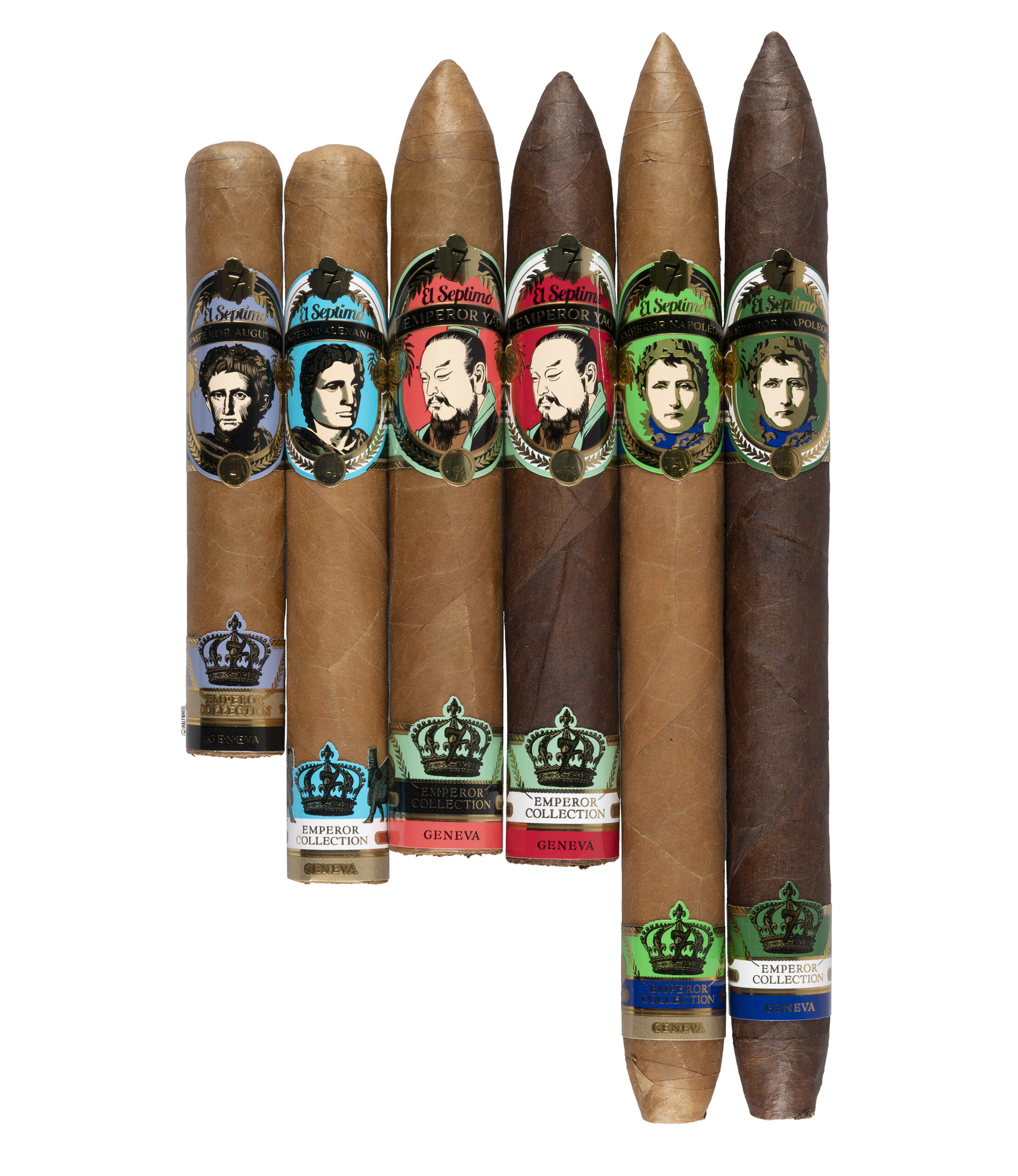
- El Septimo The Emperor Collection Augustus Connecticut (5 x 52)
- El Septimo The Emperor Collection Alexander III Connecticut (6 x 54)
- El Septimo The Emperor Collection Yao Connecticut (6 1/2 x 60)
- El Septimo The Emperor Collection Yao Maduro (6 1/2 x 60)
- El Septimo The Emperor Collection Napoleon Connecticut (9 x 55)
- El Septimo The Emperor Collection Napoleon Maduro (9 x 55)
The Alexander III is being rolled at the company’s factory in Costa Rica. The cigars are priced at $15 each and are packaged in 20-count boxes that started shipping to retailers in October 2022.
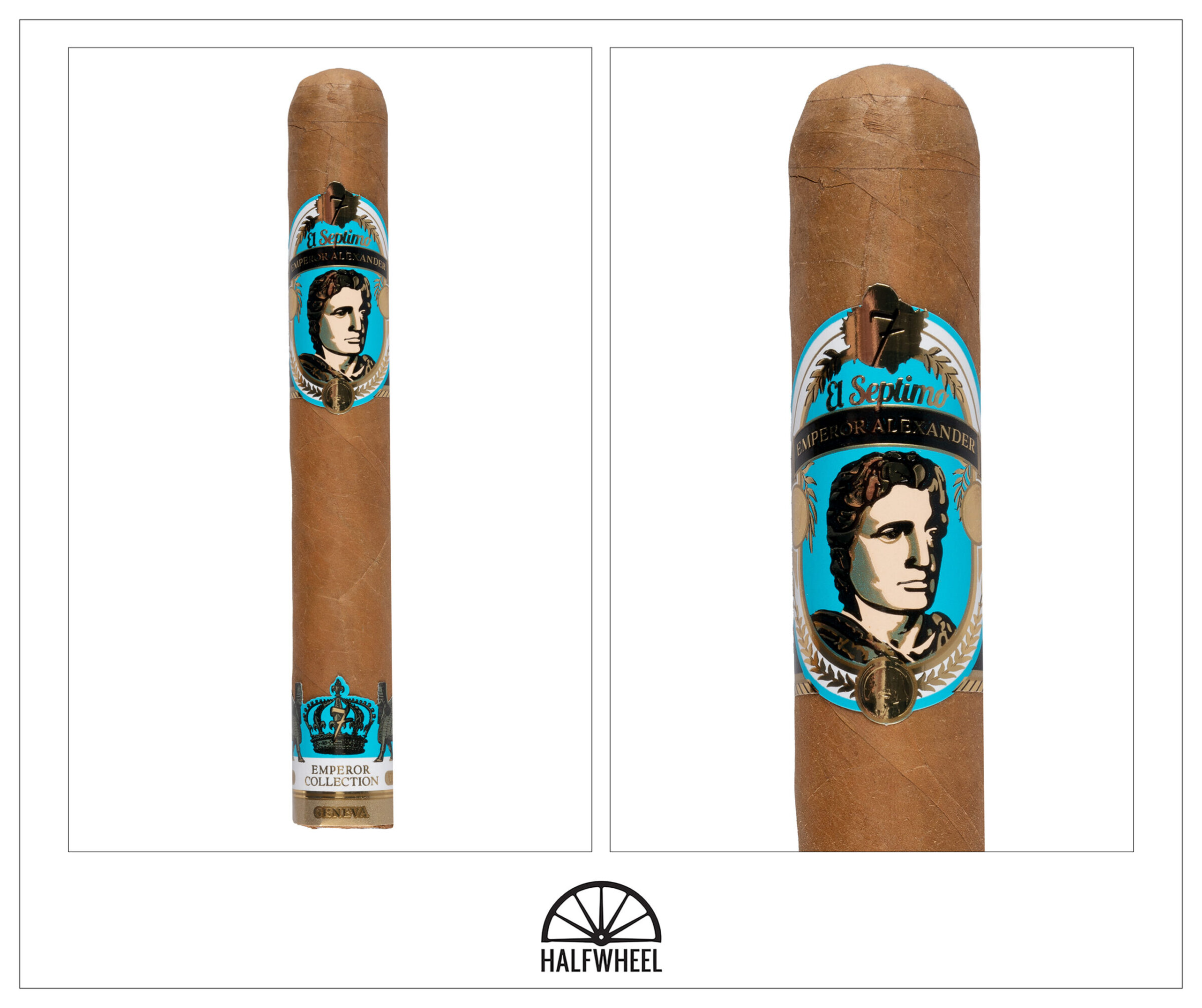
- Cigar Reviewed: El Septimo The Emperor Collection Alexander III
- Country of Origin: Costa Rica
- Factory: El Septimo
- Wrapper: Undisclosed (Connecticut)
- Binder: Undisclosed
- Filler: Undisclosed
- Length: 6 Inches
- Ring Gauge: 54
- Vitola: Toro
- MSRP: $15 (Box of 20, $300)
- Release Date: October 2022
- Number of Cigars Released: Regular Production
- Number of Cigars Smoked For Review: 3
A dull caramel-colored wrapper greets me as I take the El Septimo The Emperor Collection Alexander III out of the cellophane, and while the cigar is silky smooth to the touch, there is very little oil visible. All three cigars are nicely firm when squeezed and feature a small number of overt veins, but after a physical inspection I notice that each cigar has a large soft spot located in the same place, almost exactly in the middle between the cap and the foot. Aromas from the wrapper include strong but generic wood, leather, sawdust, nutmeg, barnyard and milk chocolate sweetness, along with a touch of a vegetal note. The foot features a distinct peanut butter aroma as well as dry hay, cedar, vegetal, white pepper and light vanilla bean sweetness. Finally, after v-cut the cold draw brings flavors of damp hay, toasted bread, peanuts, nutmeg, cocoa nibs and a bit more vanilla sweetness.
Two of the El Septimos start off softly with enjoyable flavors of hay and white pepper that slowly morph into a combination of peanuts and leather tack that continue to be the top notes through the first third. However, I notice that the last cigar is decidedly different from the first puff, as the flavors I had come to expect are replaced by acrid, bitterness that does not recede at all for a quite a while. After fighting through the first third of that cigar—more on that below in the Final Notes—the profile improved dramatically. Additional flavors in the profile of the first two cigars include sourdough bread, earth, coffee grounds, hay and a slight vegetal note that reminds me of raw broccoli, while a significant but not overwhelming amount of spice remains noticeable on my tongue through the first third. Flavor for the first two cigars is at a solid medium, strength is just under medium and the body is at a mild plus; however, the last cigar is just a mess on all three aspects. In terms of construction, the first two cigars move along at a great pace with the draws, burn lines and smoke production all working in harmony. The last cigar is another matter: I can’t seem to get air to flow through the cigar for the majority of the first third and have to relight multiple times just to try and get the burn line to move at all. Having said that, I eventually fight through it and there is a massive improvement to all aspects of the construction and flavor profile as the first third comes to a close.
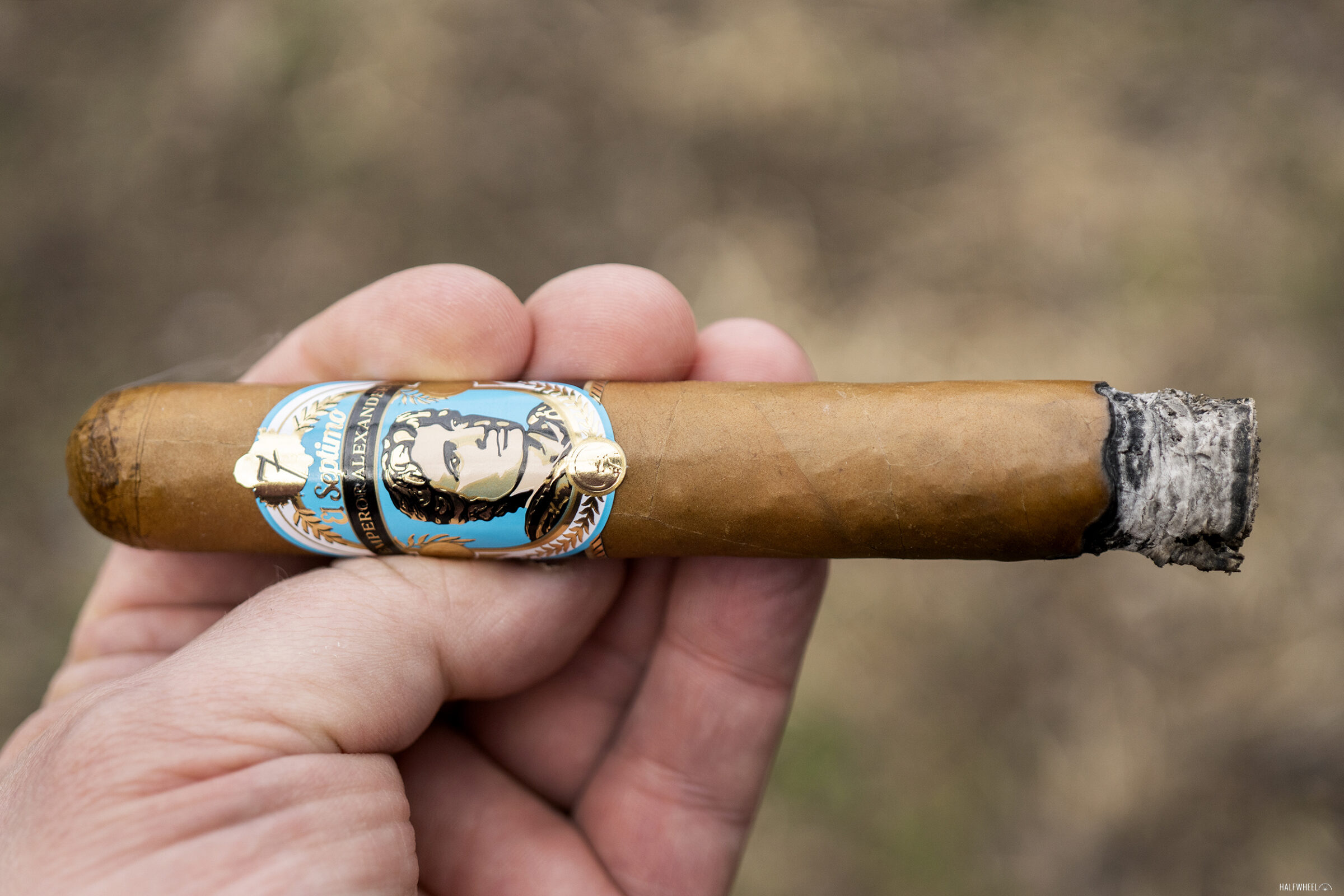
Leather tack and peanuts easily outpace the rest of the flavors in the second third of my first two El Septimo cigars, followed by secondary flavors of dry straw, gritty earth, cedar, dark chocolate and toasted bread. Thankfully, the final cigar that was having so many issues has finally burned through the problematic tobacco. While the profile of that cigar improves by leaps and bounds, the finish on that cigar still retails a bit of the acridness I tasted before while the retrohale has almost none of the sweetness present in the other two cigars. The retrohales on the first two cigars continue to feature about the same amount of white pepper and vanilla bean sweetness that I noted in the first third, but both the spice on my tongue and the raw broccoli flavor are long gone, never to return. Flavor on the first two cigars remains at a solid medium while the strength increases to medium and the body increases to a point between mild and medium. The final cigar does better on all counts compared to the first third, with the flavor and body reaching the mild plus while the strength makes it to just under medium. Construction-wise, the first two cigars feature wonderful draws and smoke production and almost no issues when it comes to burn—one cigar needs just one minor correction—while the final cigar that was having so many problems has done a complete 180 with an excellent draw, lots of smoke and a burn line that is very, very close to razor sharp.
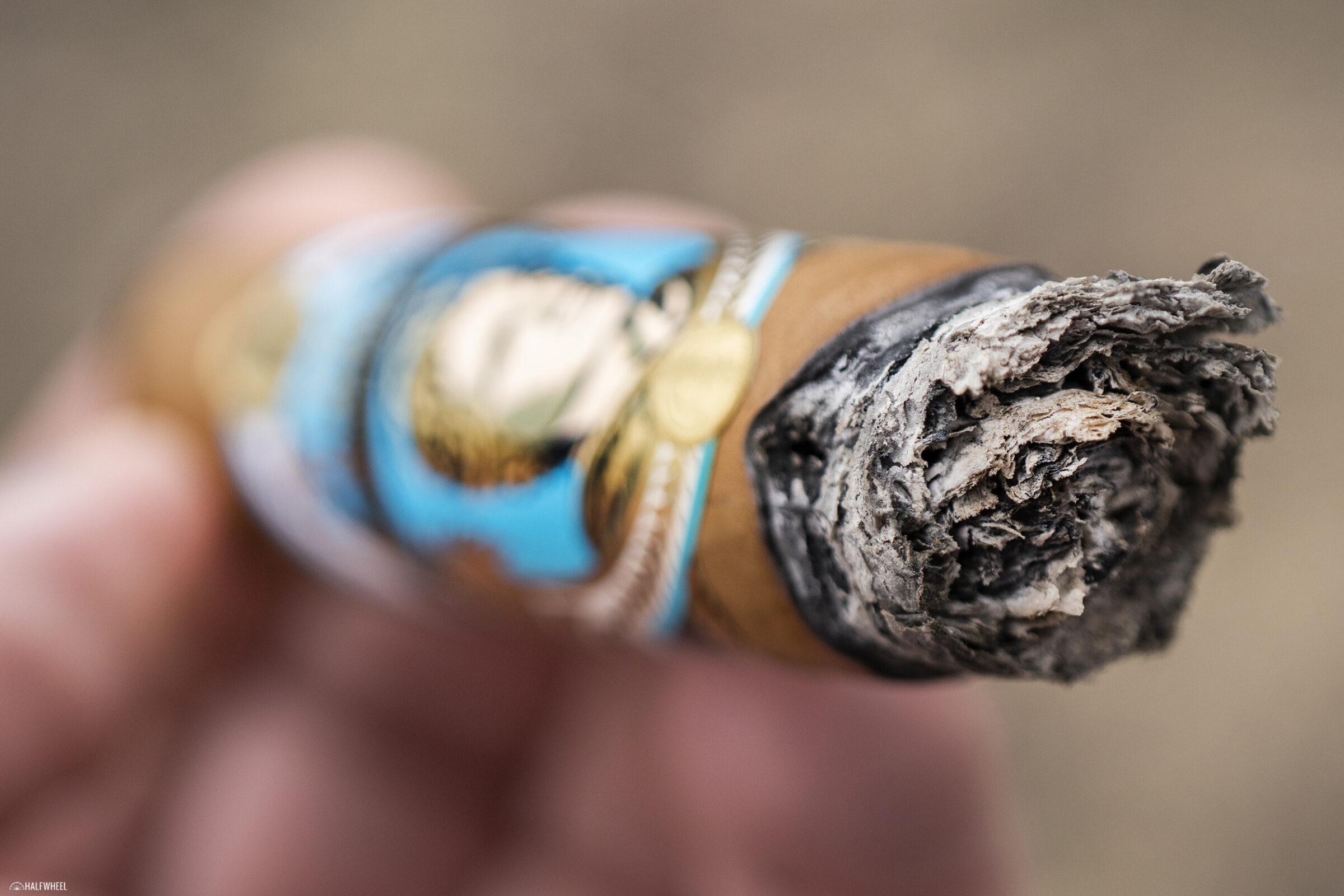
In many ways, the final third of my first two cigars is a carbon copy of the second third: the profile is topped by the same peanut and leather combination, while additional flavors of hay, barnyard, earth, cocoa nibs, sourdough bread and a new nutmeg note flit in and out at various points. The flavors in the final cigar continue to improve; while it also features a combination of nuts and leather at the top of its profile, the flavors are quite a bit more generic and not as distinct as the first two cigars. That issue extends to the retrohale: the first two cigars see a slight increase in the amount of white pepper and vanilla bean sweetness, while final cigar features a bit more sweetness than it had in the first two thirds, doing a decent job of combating—albeit not eliminating—the acrid bitterness from the first third that continues to plague the finish. Flavor on the first two cigars increases ever so slightly to a point just over medium, while the strength remains solidly in the medium camp and the body increases to land at a point slightly south of medium. The final cigar continues to improve in every aspect, wit the flavor, strength and body all hitting a point just under the medium mark before stalling out. Finally, for the first time the construction for all three cigars is very, very similar, with the burn, draw and smoke production giving me no issues whatsoever until I put the nubs down with less than an inch remaining.
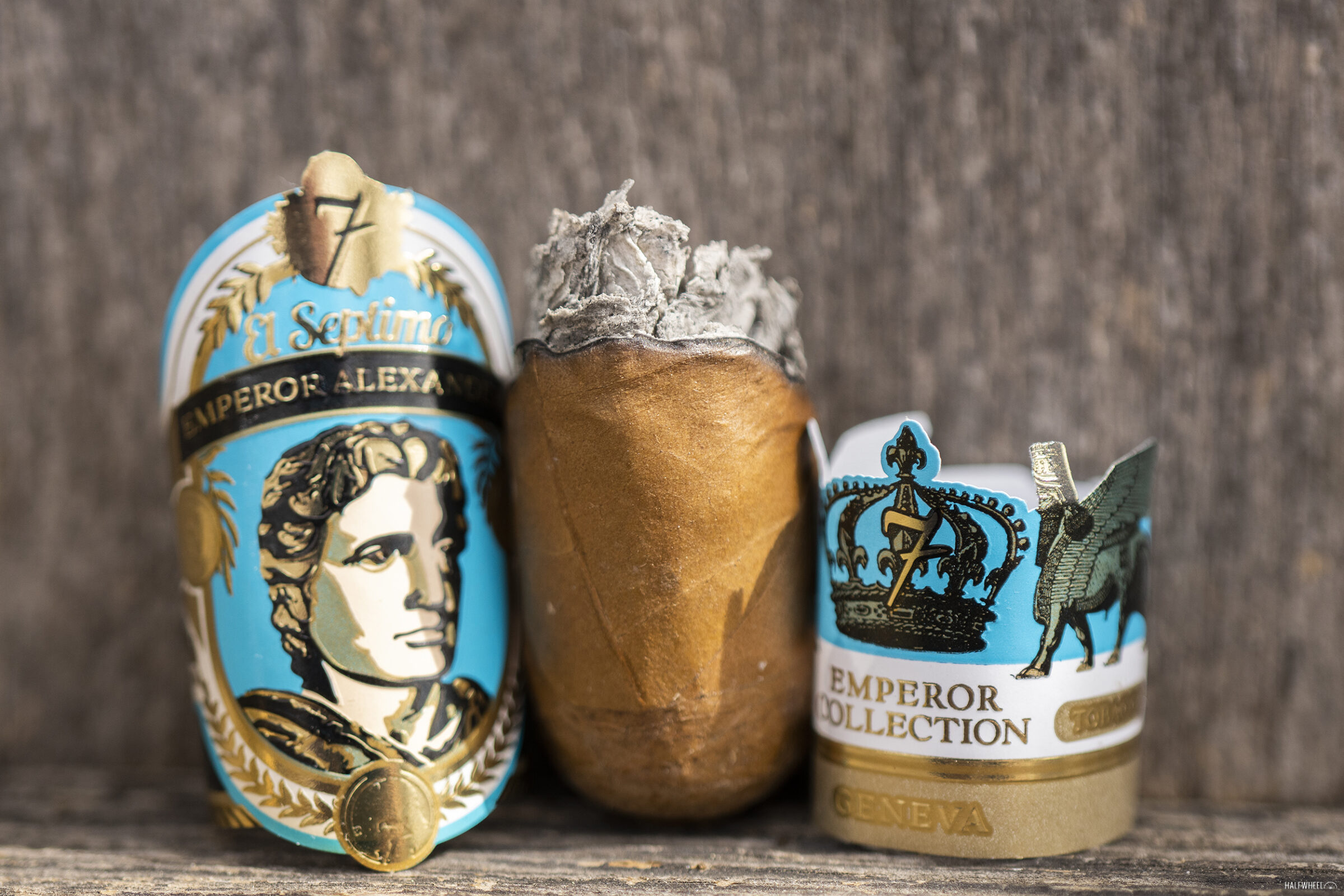
Final Notes
- As I wrote in the tasting notes above, I knew there was an issue with my final cigar from the first puff, as the flavors were noticeably more acrid and bitter and stayed that way almost until the end of the first third.
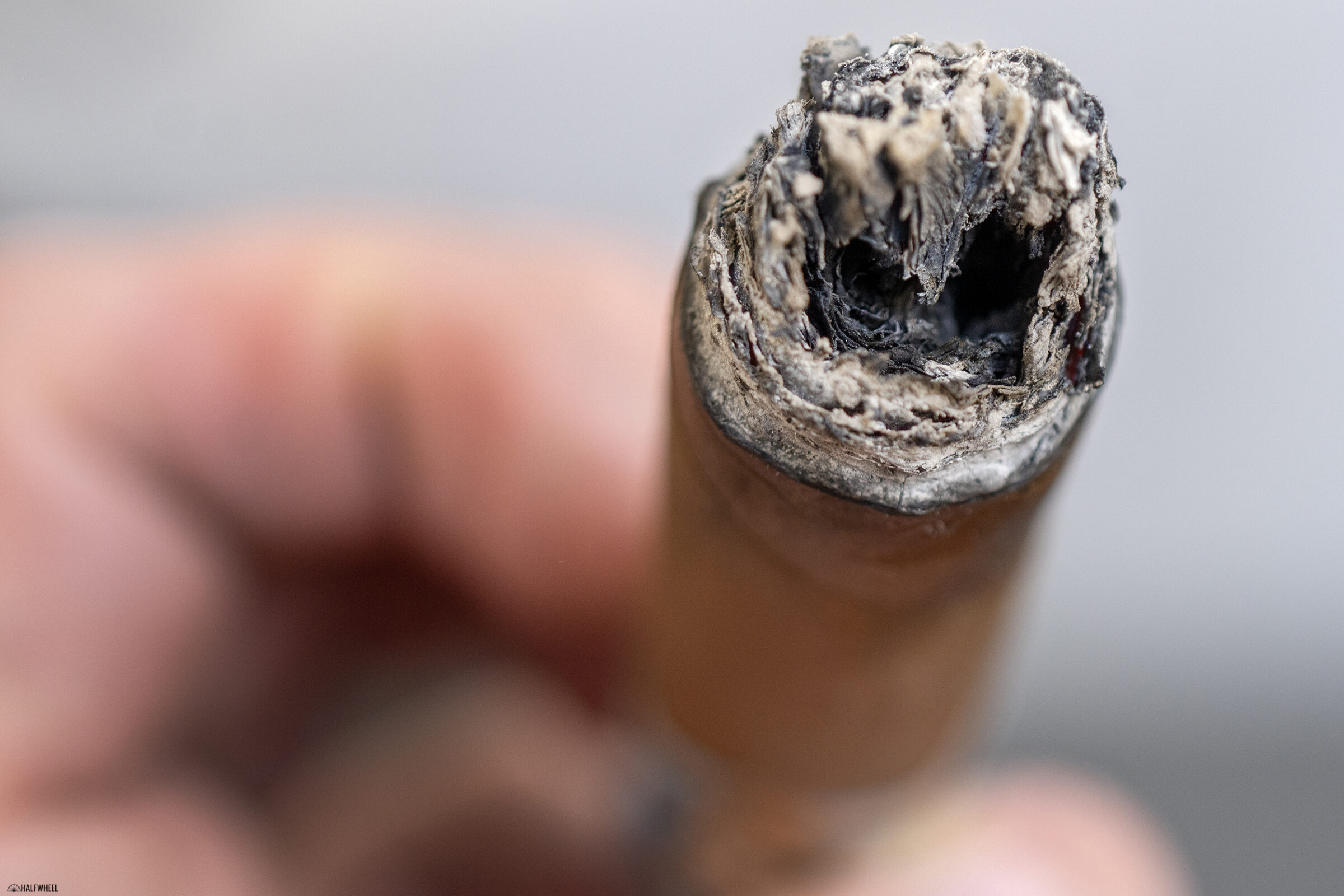
- There were multiple relights in and attempt to get through what I think was just a bit of tobacco that was under—or over—processed, over-humidified, just plain bad or a combination of all three. That tobacco was quite a bit darker in color, almost black, smelled horrible and just would not stay lit. In fact, as you can see in this detail photograph I took, there was a cavern of that tobacco that measured at least an inch long that started at the foot of the cigar.
- Editor’s Note: This is an issue that has come up from time to time to here at halfwheel. — Charlie Minato.
- Editor’s Note Pt. II: The difference between the average scores of the first two cigars and the score of the final cigar was 23 points. — Charlie Minato.
- Interestingly, I noticed no significant differences between the problematic final cigar and the other two cigars I smoked for this review after physical inspections.
- In addition to the lighters I mentioned above, El Septimo sells a humidor that includes the Napoleon Royal Salomones as well as a 24-karat gold pen and cigar punch designed by Audiard for $100,000.
- Alexander the Great is considered one of history’s most successful military commanders; in fact, military academies all over the world still teach his battle tactics to their students.
- The gold and light blue color combination of the band comes off as exceedingly gaudy, but I cannot deny they would catch my eye if I saw it in a humidor.
- The cigars smoked for this review were purchased by halfwheel.
- Final smoking time averaged a surprisingly fast one hour and 21 minutes, especially considering the fact that the final cigar took quite a bit longer than the other two due to multiple relights and burn issues.
- Update (March 31, 2023) — El Septimo informed halfwheel that it has changed the name of the Augustus Cesar, dropping the name Cesar and now referring to it as the Augustus Connecticut.
Until I smoked these cigars my only knowledge of El Septimo was from reading the various articles on halfwheel and walking by the booth at the PCA Convention to check out the really, really expensive lighters. With that in mind, I was looking forward to seeing what the Emperor Alexander III had in store for me. What I found was that two of the three cigars featured a decent enough blend with enjoyable—albeit fairly linear—flavors of peanuts and leather interspersed with a small amount of vanilla bean sweetness on the retrohale. However, the first third of the final cigar I smoked for this review really went off the rails, and while it made a valiant effort to recover—to its credit, it performed like a champ after the halfway point, at least when it comes to construction—the flavors for that cigar never really seemed quite right. While I would consider that experience an outlier, even at its best the El Septimo Alexander III does not offer much more than releases from at least a dozen other companies when it comes to Connecticut-wrapped blends.

